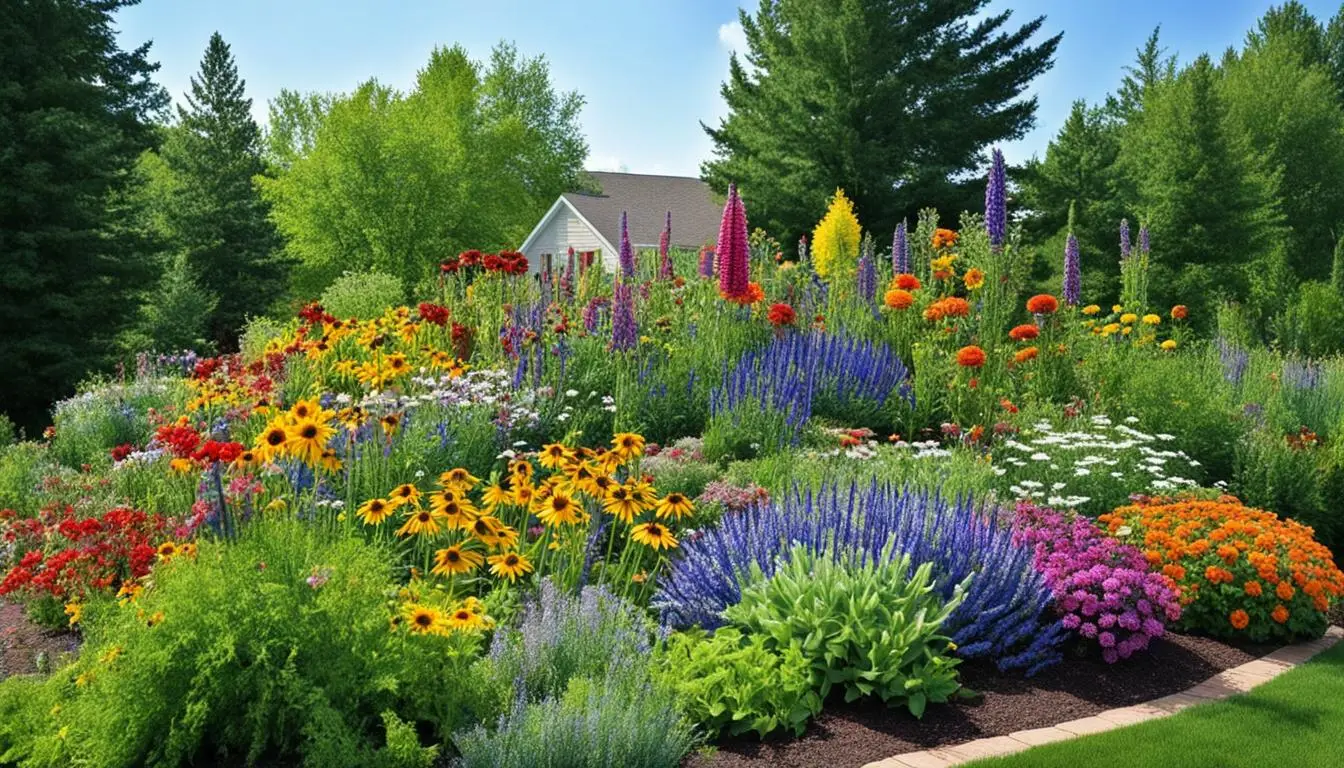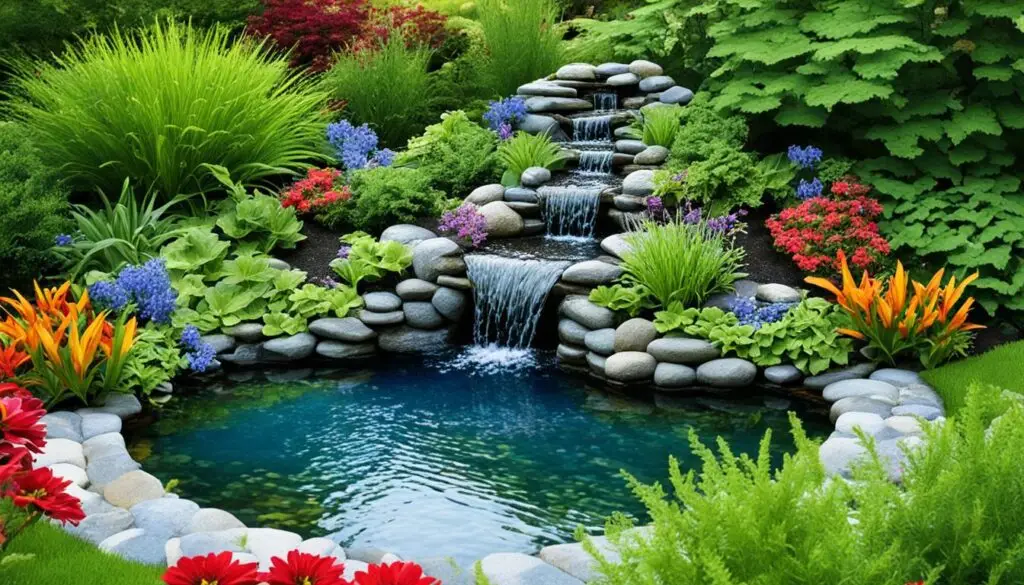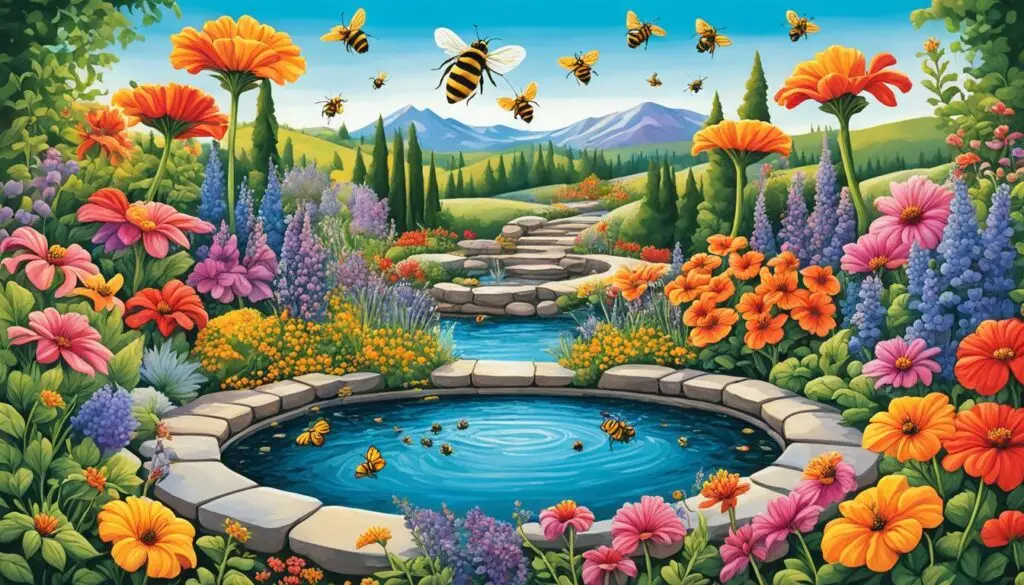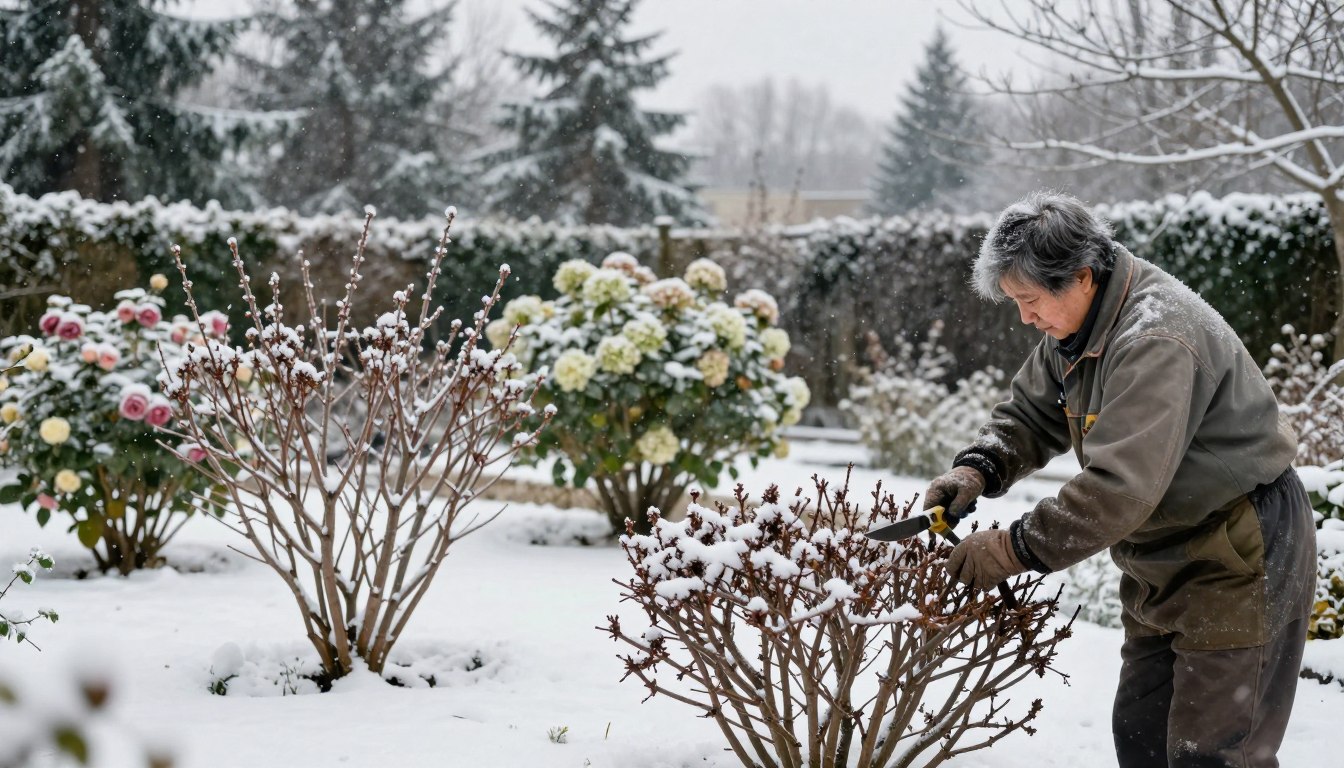In today’s fast-paced world, creating a haven for local wildlife in your own backyard has never been more important. By incorporating native plants, water features, and sustainable gardening practices, you can transform your outdoor space into a thriving wildlife-friendly garden that attracts a diverse array of birds, bees, butterflies, and other beneficial creatures. This article will provide you with a comprehensive guide to creating a wildlife-friendly garden, covering the importance of biodiversity, the benefits of using native plants, and practical steps you can take to make your garden a haven for local wildlife.
Key Takeaways
- Understand the importance of wildlife-friendly gardens in supporting biodiversity and ecosystem services.
- Discover the benefits of incorporating native plants into your garden, which provide valuable food and shelter for local wildlife.
- Learn how to create a pollinator-friendly garden that supports essential pollinator species.
- Implement practical tips and ideas to provide water sources, shelter, and nesting sites for a variety of wildlife.
- Adopt organic gardening practices to promote a healthy, sustainable ecosystem in your backyard.
Understanding the Importance of Wildlife-Friendly Gardens
Wildlife-friendly gardens play a crucial role in supporting biodiversity and maintaining healthy ecosystems. By providing food, water, and shelter structures for a variety of species, these gardens contribute to the overall health of local ecosystems and the preservation of biodiversity. Additionally, they serve as important habitats for pollinators, such as bees and butterflies, which are vital for the pollination of plants and the production of food crops.
Biodiversity and Ecosystem Services
Incorporating eco-friendly landscaping and natural materials into your garden can create a diverse array of habitats, supporting a wide range of plant and animal species. This habitat conservation not only preserves wildlife habitats but also contributes to the overall health of local ecosystems by maintaining essential ecosystem services, such as nutrient cycling, water filtration, and soil fertility.
Pollinator Conservation
Wildlife-friendly gardens play a crucial role in pollinator conservation by providing essential nesting boxes, pollinator-friendly flowers, and other resources that support the survival and reproduction of bees, butterflies, and other pollinators. By creating backyard habitats that cater to the needs of these vital creatures, gardeners can help mitigate the decline of pollinator populations and contribute to the overall health of local ecosystems.
Connecting with Nature
Interacting with nature in a wildlife-friendly garden can have numerous benefits for human well-being, including reduced stress, improved mental health, and a greater connection to the natural world. By incorporating eco-friendly practices and water sources into your garden, you can create a tranquil oasis that not only supports local wildlife but also provides a respite from the stresses of daily life, fostering a deeper appreciation for the natural world.
Choosing Native Plants for Your Garden
Incorporating native plants into your garden is a crucial step in creating a wildlife-friendly oasis. Native plants are adapted to the local climate and soil conditions, requiring less water and maintenance compared to non-native species. They also provide valuable food and shelter for a wide range of native wildlife, including birds, butterflies, and other beneficial insects.
Benefits of Native Plants
When you choose native plants for your garden, you’re not only creating a more eco-friendly and sustainable landscape, but you’re also supporting the local ecosystem. Native plants are adapted to the specific climate and soil conditions of your region, allowing them to thrive with minimal watering and maintenance. This, in turn, reduces the need for chemical treatments and helps to conserve natural resources.
Selecting Regionally Appropriate Species
To ensure your garden is a true haven for pollinators and other wildlife, it’s essential to choose native plants that are well-suited to your local environment. Research native plant species that are indigenous to your region and select a diverse array of pollinator-friendly flowers and natural habitats to attract a wide range of beneficial insects and wildlife. By creating a butterfly garden or incorporating eco-friendly landscaping, you can transform your outdoor space into a thriving oasis for pollinators and other local species.
Creating a Wildlife-Friendly Garden: Tips and Ideas
To create a truly wildlife-friendly garden, you can implement a variety of practical tips and ideas. Providing reliable water features, such as bird baths, ponds, or shallow dishes, can attract a wide range of species to your garden. Incorporating shelter and nesting sites, like birdhouses, brush piles, or dense shrubs, can offer safe havens for birds, insects, and other small creatures.
Providing Water Sources
Ensuring a reliable source of water is essential for attracting and sustaining a diverse array of wildlife in your garden. Bird baths, ponds, or even shallow dishes filled with water can provide a much-needed resource for birds, butterflies, and other thirsty visitors. Consider incorporating water features that offer both deep and shallow areas, catering to the needs of various species.
Building Shelter and Nesting Sites
Creating shelter and nesting sites in your garden can provide safe havens for birds, insects, and other small creatures. Erecting birdhouses of different sizes and designs can offer cozy homes for a variety of avian species. Incorporating dense shrubs, brush piles, or even leaving small sections of your garden untouched can also offer valuable wildlife shelters.
Incorporating Organic Gardening Practices
Embracing organic gardening practices can significantly enhance the eco-friendly and sustainable nature of your wildlife-friendly garden. Avoiding the use of harmful pesticides and instead opting for natural pest control methods, such as introducing beneficial insects or using organic repellents, can create a healthier environment for all your garden’s inhabitants. Additionally, composting can provide nutrient-rich soil to support the growth of your pesticide-free plants and attract a variety of decomposers, like earthworms, that contribute to the overall health of your garden’s ecosystem.
Attracting Pollinators to Your Garden
Pollinators, such as bees, butterflies, and hummingbirds, play a vital role in the health of our ecosystems. By creating a pollinator-friendly garden, you can support these important creatures and contribute to the conservation of their populations.
Butterfly Gardens
Incorporating a butterfly garden, featuring nectar-rich plants that attract and support various butterfly species, can be a delightful addition to your outdoor space. These vibrant, fluttering visitors not only add beauty to your garden but also play a crucial role in the pollination of many plant species.
Bee-Friendly Flowers and Plants
Planting a selection of bee-friendly flowers and plants can provide a valuable food source for these essential pollinators. By including a diverse array of pollinator-friendly blooms throughout your garden, you’ll be able to attract and sustain a thriving population of bees, ensuring the continued health of your pollinator habitats.
Conclusion
By implementing the tips and ideas discussed in this article, you can transform your garden into a thriving, wildlife-friendly oasis. From choosing native plants to providing water sources and shelter, there are numerous ways to create a welcoming environment for a diverse array of local species. Embracing sustainable gardening practices, such as organic pest control and composting, can further enhance the ecological value of your garden while contributing to the overall health of the environment.
Remember, every small step you take towards creating a wildlife-friendly garden can make a meaningful difference in supporting local biodiversity and fostering a deeper connection with the natural world. By prioritizing habitat preservation and eco-friendly approaches, you can play a vital role in nurturing the delicate balance of our local ecosystems and providing valuable resources for the pollinators and other creatures that call your garden home.
Ultimately, transforming your outdoor space into a haven for wildlife is not only rewarding for you but also crucial for the long-term health and sustainability of our shared environment. So, embrace the journey, get your hands dirty, and watch as your garden blossoms into a vibrant, living ecosystem that celebrates the beauty and diversity of the natural world.
FAQ
What are the benefits of creating a wildlife-friendly garden?
Wildlife-friendly gardens play a crucial role in supporting biodiversity and maintaining healthy ecosystems. By providing food, water, and shelter for a variety of species, these gardens contribute to the overall health of local ecosystems and the preservation of biodiversity. Additionally, they serve as important habitats for pollinators, such as bees and butterflies, which are vital for the pollination of plants and the production of food crops. Furthermore, interacting with nature in a wildlife-friendly garden can have numerous benefits for human well-being, including reduced stress, improved mental health, and a greater connection to the natural world.
Why is it important to choose native plants for a wildlife-friendly garden?
Incorporating native plants into your garden is a crucial step in creating a wildlife-friendly oasis. Native plants are adapted to the local climate and soil conditions, requiring less water and maintenance compared to non-native species. They also provide valuable food and shelter for a wide range of native wildlife, including birds, butterflies, and other beneficial insects. When selecting plants for your garden, it’s important to choose species that are native to your region to ensure they are well-suited to the local environment and can thrive without the need for excessive watering or chemical treatments.
What are some practical tips for creating a wildlife-friendly garden?
To create a truly wildlife-friendly garden, you can implement a variety of practical tips and ideas. Providing reliable water sources, such as bird baths, ponds, or shallow dishes, can attract a wide range of species to your garden. Incorporating shelter and nesting sites, like birdhouses, brush piles, or dense shrubs, can offer safe havens for birds, insects, and other small creatures. Additionally, adopting organic gardening practices, such as composting, natural pest control, and avoiding the use of harmful pesticides, can promote a healthier, more sustainable ecosystem in your garden.
How can I attract pollinators to my garden?
By creating a pollinator-friendly garden, you can support these important creatures and contribute to the conservation of their populations. Incorporating a butterfly garden, featuring nectar-rich plants that attract and support various butterfly species, can be a delightful addition to your outdoor space. Similarly, planting a selection of bee-friendly flowers and plants can provide a valuable food source for these essential pollinators.
What are some sustainable gardening practices I can incorporate into my wildlife-friendly garden?
Embracing sustainable gardening practices, such as organic pest control and composting, can further enhance the ecological value of your garden while contributing to the overall health of the environment. Implementing these eco-friendly practices can promote a healthier, more sustainable ecosystem in your garden and support the conservation of local wildlife and their habitats.








